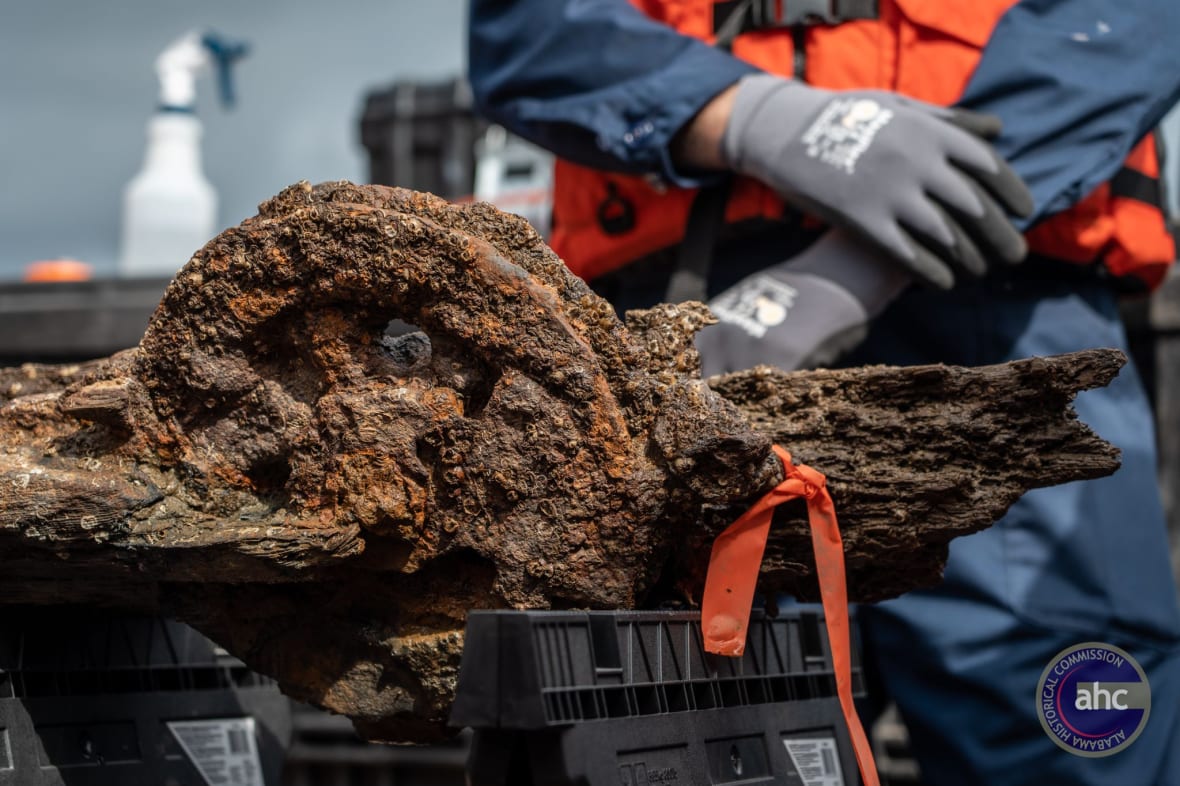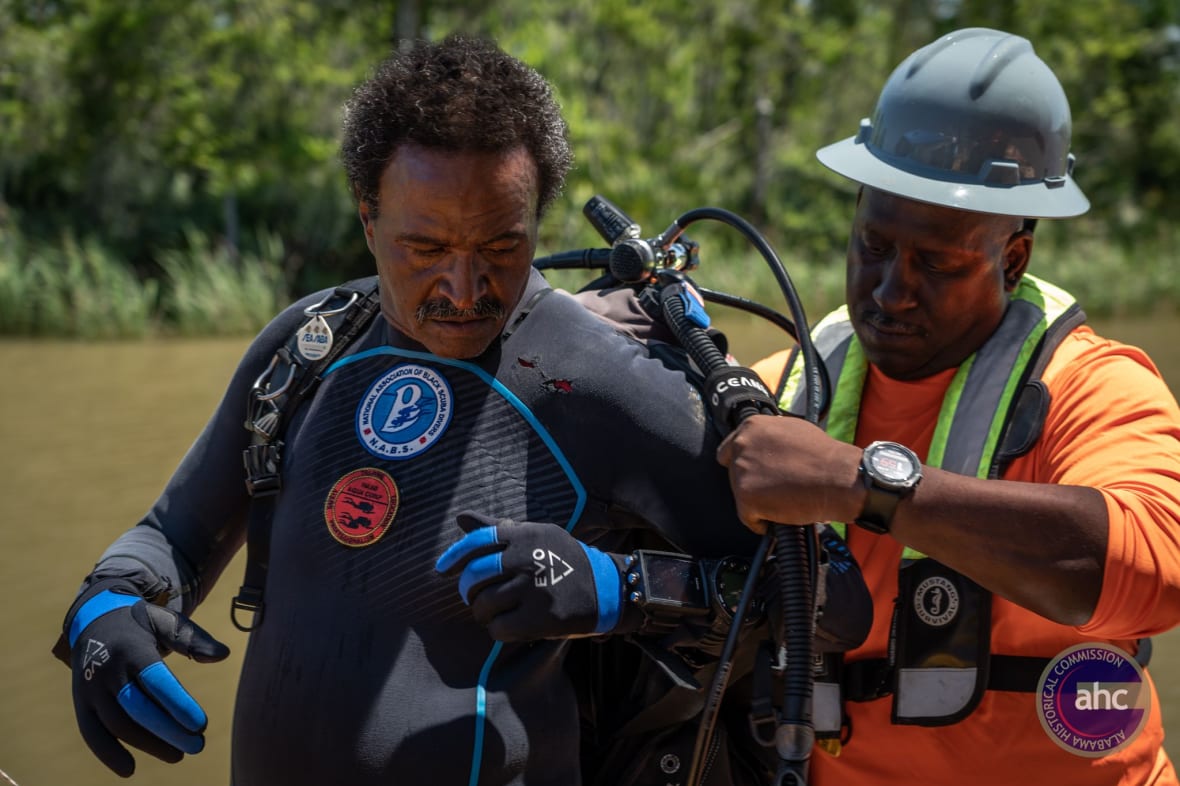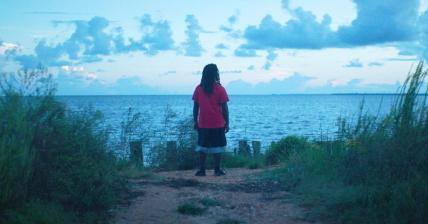‘Clotilda: The Exhibition’ chronicles America’s last known ship carrying enslaved people
The exhibition opens on the 163rd anniversary of the 110 Africans' arrival in Mobile, Alabama.
On Saturday, the Africatown Heritage House in Mobile, Alabama, will open an exhibit that chronicles the journey and aftermath of the last known ship carrying enslaved people to America.
“Clotilda: The Exhibition” opens on the 163rd anniversary of 110 Africans’ arrival on the shores of a strange country. The exhibition details the journey, ship, and actions of a band of human enslavers who set fire to and sank the Clotilda to cover up their illegal enterprise. It’s also about the perseverance of people who created a new life and the ancestors and community who honor them today.

Jeremy Ellis, the president of the Clotilda Descendants Association, told theGrio, “Our hope is as memory keepers, we continue to tell this story.”
The story started in 1860, when plantation owner Timothy Meaher of Mobile financed a journey to what is now Benin to illegally enslave Africans and bring them to Alabama to work in the cotton fields. Meaher, with the help of his captain, William Foster, made the journey even though, in 1808, Congress had outlawed importing enslaved people from other countries.
According to the Encyclopedia of Alabama, Meaher kept 32 of the enslaved people on his plantation and divided the others among several associates. The enslaved people, between the ages of 5 and 23, weren’t freed until 1865, when the Civil War ended.
The people who were freed from bondage wanted to return to Africa but lacked the money to pay for the journey. Instead, they stayed behind, worked hard, and by the 1870s, purchased about 50 acres of land that became Africatown.
Africatown residents passed stories of the Clotilda down through generations, but it wasn’t until 2018 that researchers found the sunken boat.
“Every time I have these conversations, it stirs memories of the pain and suffering and trauma that these people, our ancestors, went through, said Kamau Sadiki, a scuba diver and underwater archaeology advocate who has visited the Clotilda, a schooner, in its resting place in shallow water and mud under the Mobile River.
Sadiki recalls the first time he dived at the site and the emotions that rushed through him when he saw the cargo hold with chains that held Black people against their will.

“I remember coming across the first tangible piece of artifact of that wreck. It lies between these rocks. It’s been there for almost two centuries, and I just remember, at that time, reaching out and grabbing that piece of wood. And it might sound a bit strange, but I just heard the screams and felt the pain and the suffering of those individuals that were lost there.”
The journey was so powerful he wrote a prayer that he says each time before he dives as a way to show respect for such a sacred site.
Beloved Ancestors: Your voices have been quiet for 162 years. But your silence ends now!
Your voices and memory are lifted now from this wretched vessel – through us – and we welcome you to speak through us. Our connection will never be broken. We are because of you.
Thank you for reaching out to us. Blessings to your Spirits- always.
Jessica Fairley, manager of the Africatown Heritage House, hopes others feel those emotions when visiting the brand-new facility, which will house Clotilda artifacts for at least three years. Artifacts include a half-size replica of the Clotilda, which gives visitors an idea of the cramped conditions during the difficult 45-day journey from Africa to Mobile.
According to the Alabama Historical Society, the cargo hold measured just 26 feet long, 23 feet at its widest, and just 6 feet, 11 inches high. The dive team that surveyed the wreckage estimated the space at 525 square feet.
“The intact lower hull, the interior of the hull, with intact bulkheads forming compartments, including that in which the captives were held and transported against their will in harsh, brutal conditions, survive,” the society wrote in its application to include the Clotilda on the National Register of Historic Places. The Clotilda received that designation in November 2021.
Ellis, a direct descendant of two people who endured the Clotilda journey, wants people to understand the history of Clotilda and the current plight of those who live in Africatown, a community with 98% Black residents. Some 35% of its nearly 2,000 residents live below the poverty level.
“We also want the world to learn about the Africatown community and for them to go and experience and see the blight, the food desert, the environmental injustices that the people and the residents of Africatown are currently experiencing,” Ellis said. “It’s important to allow them to tell their story and what they’re experiencing today,” he said.
In 2022, theGrio examined the impact bad air has on Black people, including in Aftricatown. Residents and activists discussed the sickening smell and illnesses that they linked to the pollution from nearby factories.
This weekend, ancestors and the community will come together to learn more about the Clotilda in a way Fairley hopes will make them curious about their history.
“I’m from the area. I knew the families for a long time, but as I dive deeper, it just makes me want to know more about who I am,” Fairley said.
“My ancestors did not come across on Clotilda, but hearing the stories being connected to it makes me want to know: Who are my people? Where did they come from? Which ship did they come over on? Hopefully, we will begin to learn more about not just the Clotilda but other slave ships that came abroad.”
TheGrio is FREE on your TV via Apple TV, Amazon Fire, Roku and Android TV. Also, please download theGrio mobile apps today!
More About:News











